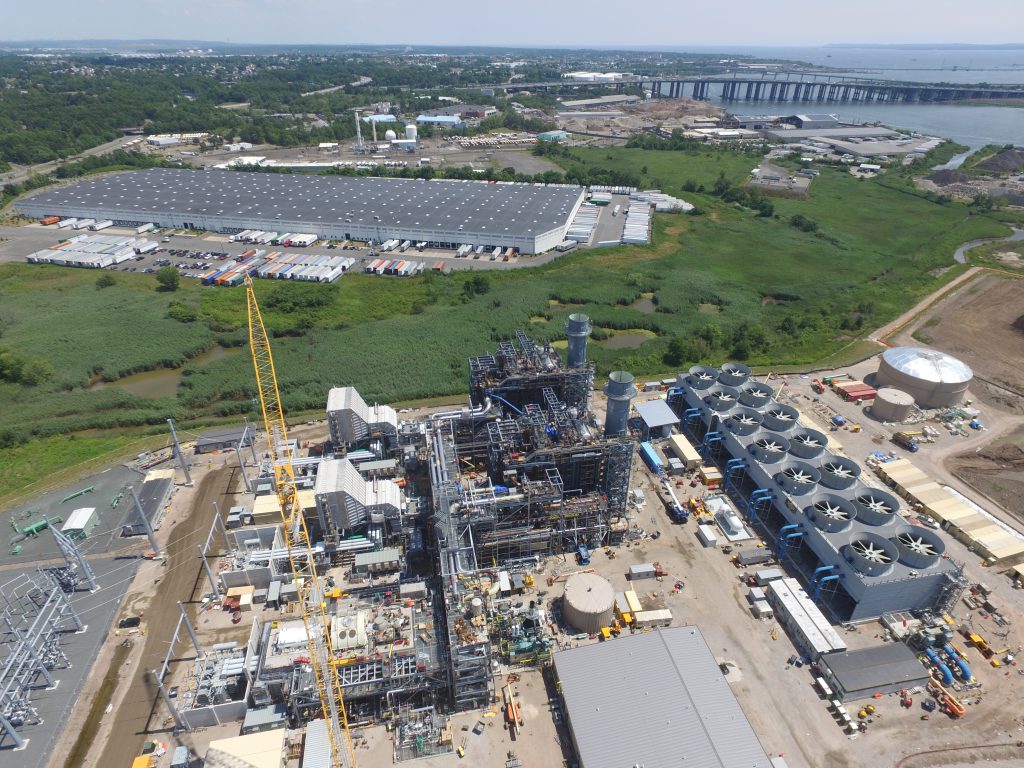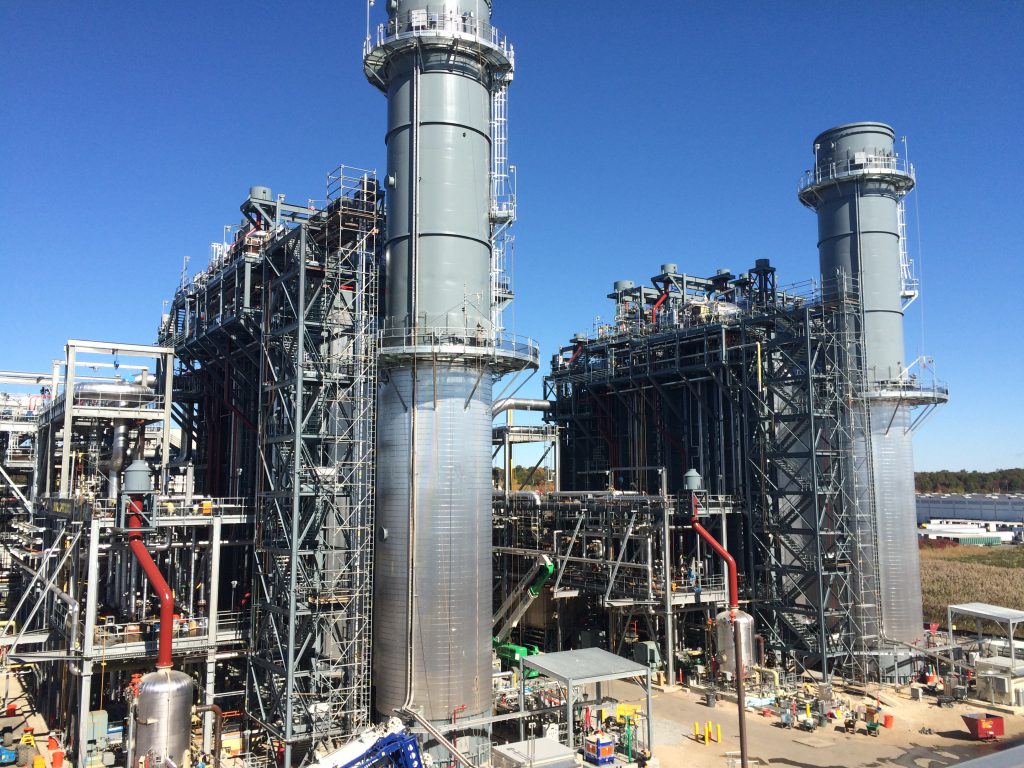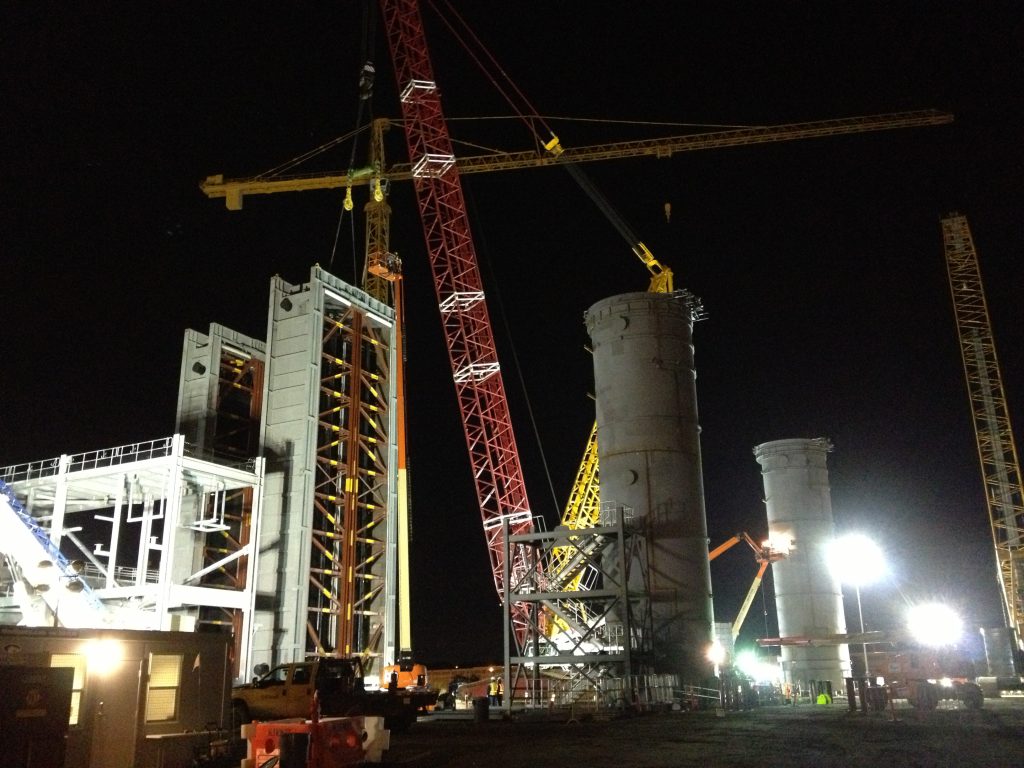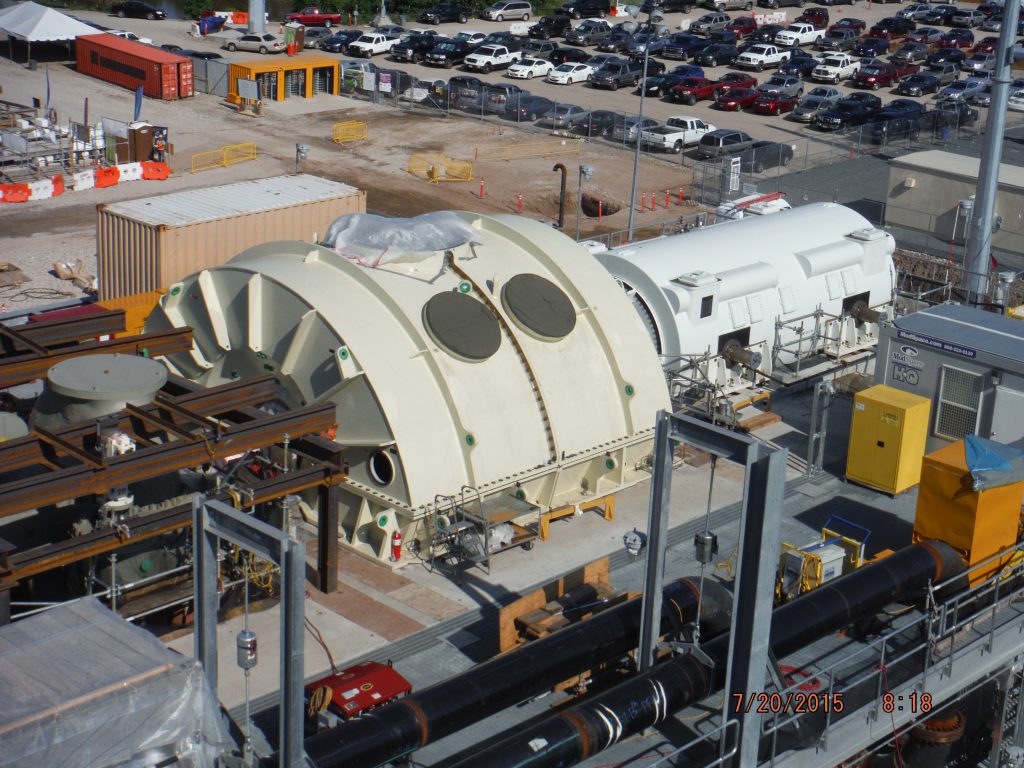Building a clean energy plant on previously contaminated grounds
The Township of Woodbridge was the first township in New Jersey — King Charles II of England granted it a royal charter in 1669. Nearly 350 years later, the Woodbridge Energy Center (WEC) recently made another debut as the area’s premier power generating facility.
For more than two years, Kiewit Power worked diligently on the natural-gas-fueled, combined-cycle power generation facility — a station that is expected to power more than 700,000 homes. Client Competitive Power Ventures (CPV) hired Kiewit in mid-2013 to engineer, procure, construct and commission the new 725 megawatt facility. Substantial completion was achieved ahead of schedule in January 2016.
“Coordination between all partners is a must if you’re going to finish a project of this size and scope on time,” said Kiewit Power Project Manager Tyler Nordquist. “Our involvement in the initial phases of the project and the teamwork we maintained with CPV and GE throughout enabled us to turn the plant over early.”
Environmental improvements
The WEC provides clean, efficient power and helps reinvigorate the area where an old, abandoned chemical plant once stood. In 2009, the New Jersey Legislature signed the Site Remediation Reform Act, setting forth sweeping changes to how site remediation is performed. According to the New Jersey Department of Environmental Protection, “The goal is to increase the pace of remediation, thus helping to decrease the threat of contamination to public health and safety and of the environment, and to quickly return underutilized properties to productive use.”
Only a handful of these contaminated sites have passed the stringent approval process to become designated development areas, and the WEC is one of them. As a result, all civil, concrete and underground utility work plans developed by Kiewit had to be reviewed and approved by a licensed professional from the New Jersey State Department of Environmental Protection.
The WEC resides in the Keasbey Brownfield Development Area, which allows local municipalities and private developers to clean up contaminated sites. So far, it has created jobs and initiated thriving economic development.
“We are fortunate that Woodbridge is a very welcoming community and site. The Township staff visits monthly and raves about the progress and how nice the site looks,” said Dan Nugent with CPV. “This is a wonderful reuse of the property that combines industrial development with wetland rehabilitation being conducted by others.”
Additionally, as part of CPV’s mission to conserve natural resources and be eco-friendly, the WEC will predominantly use greywater to meet facility cooling needs. The greywater is a beneficial reuse of otherwise discharged, treated wastewater generated in households or office buildings. Its use minimizes the plant’s impact on water resources and the environment for a cleaner, more sustainable facility.
The heat recovery steam generators (HRSG) and pipe rack are seen as construction approached completion.
Tight schedule, new technology
Although the development area sits on more than 270 acres, the WEC occupies only 27 of those acres — making for a tight workspace for such a large plant.
To stay ahead of schedule and on budget, the project team planned every piece of equipment’s use down to the hour. Taking full advantage of ever-improving technology made scheduling happen right the first time.
CPV recognized Kiewit’s unique approach as well.
“As far as constructability and planning, I think Kiewit’s efforts are very effective and somewhat unique,” added Nugent. “From what I experienced from the outside, Kiewit spends a lot more time planning, and it shows.”
“We also used drone technology to see exactly where we could land materials, if we were storing too much material in a certain place or if we were able to consolidate materials,” said Construction Manager Rick Dotson. “Using technology to our advantage made a huge impact and helped keep us on schedule. These tools make our projects better and our people work smarter.”
Energy process
The scope encompassed building two GE frame 7FA.05 combustion turbine generators (CTGs), which will exhaust into two moderately duct-fired, triple-pressure CMI heat recovery steam generators (HRSGs). The steam produced from the HRSGs will power a reheat tandem compound double flow GE D11 steam turbine. This equipment is part of a Rapid Response Package from General Electric — one of the first applications of its kind.
“Building a 725-megawatt plant requires a huge effort,” confirmed Nordquist. “These projects require a high level of technical expertise and present logistical challenges, all while being constrained by a tight schedule and budget.”
And keeping the client happy is all in a day’s work.
“Kiewit staffs its projects differently than most other contractors. Everyone marches to the same beat; they are a well-oiled machine,” added Nugent. “I look forward to working with this team again on upcoming projects.”







